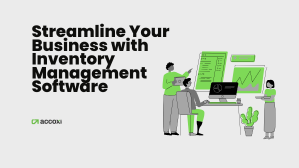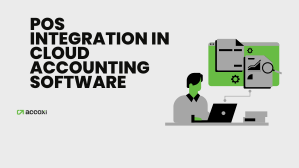

April 18, 2023

In every business, transactions are essential. In corporate finance, every transaction is tracked and recorded using the account receivable ledger. It enables to have access to all details of the consumer’s account and thereby determining which categories of consumers pay on time every time and ones who don’t. Knowing the right software to handle the accounts receivable ledger procedures effectively can help businesses grow more productively. To have a better knowledge of the accounts receivable ledger and its benefits, read more below.
An accounts receivable ledger is an accounting ledger that displays each customer's transaction and payment history to whom the company lends credit. The subsidiary ledger for accounts receivable lists all of a company's credit sales. The accounts receivable ledger gives all the information regarding the sales by displaying invoice dates, numbers, credit memos, payments made in relation to the credit sales, discounts, refunds, and allowances. To maintain accuracy, the balance in each client account is frequently compared to the general ledger's accounts receivable balance. A subsidiary ledger is also known as a subledger or subaccount. The total of all invoices in the subsidiary ledger for accounts receivables, also known as the control account, should equal the total of the receivables on the general ledger.
Creating and maintaining an accounts receivable ledger in corporate finance is a tiresome task. However, it prevents clutter in the general ledger. The general ledger will be used to record all transactions if an accounts receivable ledger is not kept. Additionally, you may choose exactly what information is displayed in your accounts receivable ledger.
Moreover, accounts receivable ledger is a must if your company is dealing with more clients. Considering the scenario of multiple customers making a purchase or paying at once, it is quite difficult to handle the credit balance of each customer at once. It occurs as all activities related to accounts receivable including credit sales, payments, sales discounts, etc are recorded in a single account. The accounts receivable ledger helps to manage this situation more proactively in corporate finance. Also, it gives access to the credit balance and transactions associated with each customer.
An accounts receivable ledger's key advantage is that it provides us with access to more specific information about a company's accounts receivable. The organization of a business and the ability for it to work in a more focused manner are made possible by the analysis that can be performed on the detail offered by the accounts receivable subsidiary ledger. It makes it simpler to compile information regarding a specific customer's credit balance. It is vital the ledger is up-to-date in order to avoid any inconvenience in accounting.
Even though maintaining both a general ledger and an accounts receivable subsidiary ledger entails more work and paperwork, it is usually worthwhile. Giving the information required to generate larger revenues and more focused business expansion can significantly help in making beneficial alterations to a company's business strategy. With effective accounting software like Accoxi, all accounting tasks including core accounting, bank reconciliation, business report generation, pos-enabled billing, accounts receivable ledger procedures, etc can be effectively managed which eventually causes an increase in productivity and revenue.
The accounts receivable subsidiary ledger can arrange many parts of revenues, prevent internal fraud, keep track of past-due debts, and prevent client overpayments. It can also give insight into customer demographics by profitability. Other benefits of the accounts receivable ledger are as follows:
There is a possibility for manipulative and fraudulent activities to occur from internal and external sources. This can be prevented by making the accounts receivable ledger inaccessible to everybody so that only authorized individuals can view it. Employees who have no business dealing with credit sales or accounts receivable are prevented from accessing the accounts a receivable ledger of your company in this way. This aids in reducing internal theft and fraud.
The administration of a company's numerous projects might also benefit from the use of an accounts receivable ledger. If your company manages a number of projects for distinct clientele, it would be simpler for you to categorize your clients as an accounts receivable ledger may provide access to specific information about a customer's balance.
Maintaining a subsidiary ledger has another advantage in that it can help you identify your target market and demography. This is helpful in determining which age group is more likely to buy a product, service, and any specific industry suitable for cash flow. By understanding better, you can create a specific good or service that is tailored to these customers' desires.
Keeping track of customers who have paid and who still owe your company is essential in every business. Accounts receivable ledger simplifies this process whenever required. Having suitable software with best-in-class features will be a great solution for your businesses to achieve more revenue and growth. Accoxi is a dynamic accounting software that can help you with accounts receivable ledger procedures along with core accounting, easy invoicing, branch accounting, sales and purchase management, and many more.
Looking for smart accounting software to manage all your accounting tasks? Connect with us today and get to know how Accoxi can help you manage all your accounting easily with efficiency. Get a free trial of Accoxi today.


